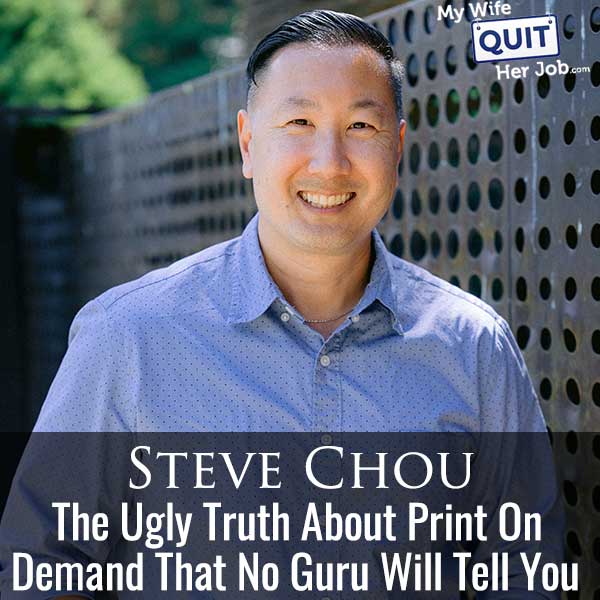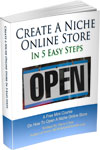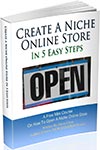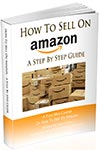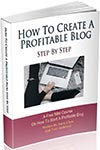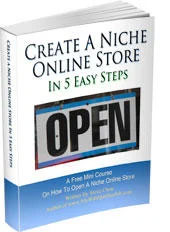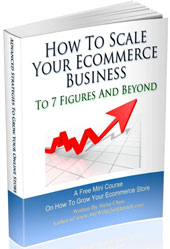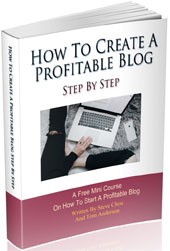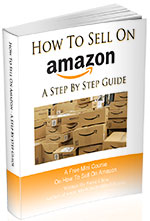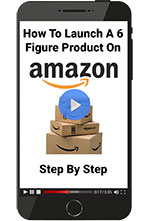Podcast: Download (Duration: 13:23 — 15.6MB)
In this solo episode, I’ll answer all of the most commonly asked questions about print on demand dropshipping including the questions that most people won’t give you a straight answer on.
Get My Free Mini Course On How To Start A Successful Ecommerce Store
If you are interested in starting an ecommerce business, I put together a comprehensive package of resources that will help you launch your own online store from complete scratch. Be sure to grab it before you leave!
What You’ll Learn
- The big negatives of Print On Demand
- How to run a POD business profitably
- Why POD isn’t as great as you think
- Sublistar Star IV DTF Printer – Click Here To Check It Out
Sponsors
SellersSummit.com – The Sellers Summit is the ecommerce conference that I’ve run for the past 8 years. It’s small and intimate and you’ll learn a ton! Click Here To Grab The Recordings.
The Family First Entrepreneur – Purchase my Wall Street Journal Bestselling book and receive $690 in free bonuses! Click here to redeem the bonuses
Transcript
You’re listening to the MyWifeQuarterJob podcast, the place where I cover the latest strategies to grow an online business. Now for some reason, I’ve gotten more more questions from people wanting to start a print-on-demand business lately. Plus, there seems to be an uptick in the number of spammy videos on YouTube that have been advertising this business model, along with using AI-generated images. So I thought that I would set the record straight today and provide you with a realistic view of what it takes to succeed with this business model.
00:28
But before we begin, if you haven’t picked up my Wall Street Journal bestselling book, The Family First Entrepreneur yet, it’s actually available on Amazon at 38 % off right now. My book will teach you how to achieve financial freedom by starting a business that doesn’t require you to work yourself to death. Plus, you can still grab my free bonus workshop on how to sell print on demand and how to make passive income with blogging, YouTube and podcasting when you grab the book over at mywifequitterjob.com slash book.
00:53
So go over to mywifequitterjob.com slash book, fill out the form and I’ll send you the bonuses right away. Now onto the show.
01:04
Welcome to the My Wife QuitterDrop podcast. In this episode, I’ll answer all the most commonly asked questions about print-on-demand drop shipping, including the questions that most people will not give you a straight answer on. Now, print-on-demand has a reputation for being a get-rich-quick scheme because it sounds too easy. You don’t need to store inventory, you don’t need to ship or fulfill orders, and you don’t need much money to get started. All you have to do is create designs, and the print-on-demand company does the rest. Now, while all these statements are technically true,
01:34
A common misconception is that running a successful print-on-demand business is easy. But in reality, success with print-on-demand has many pros and cons and isn’t as straightforward as you are led to believe. So in this episode, I’ll answer all the in-depth questions related to print-on-demand to provide you with a complete view of what it takes to run a profitable online store. Now, when it comes to print-on-demand, all the gurus out there tend to focus on the positive aspects of print-on-demand
02:02
such as how easy it is and how cheap it is to start. But what they don’t tell you is that the margins are pretty horrific. Sure, you got full control over pricing, but there’s only so much money you can charge for a t-shirt or a hoodie before no one’s gonna buy from you. For example, if you were to go to Printful, a pretty decent quality shirt costs around $16.25, which includes printing on one side of the garment. Now, shipping for this garment is $4.69,
02:31
which makes your cost a total of $20.94. Now to make a profit of just five bucks a shirt, you need to sell it for $26. If you want to make a paltry 10 bucks, you have to price your shirt at $31. Now realistically, most people aren’t going to be willing to pay $26 or $31 for a t-shirt unless you’re a celebrity or an influencer. Heck, the most I’ve ever paid for a t-shirt was 40 bucks at a concert, but that was a special occasion.
02:59
I generally would never pay that amount for the exact same t-shirt at a store. Now sure, there are cheaper t-shirts to sell from Printful, but if you want to sell a high quality product, then $15 to $16 is what you’re going to have to pay. Now it’s because of the extremely low margins of print-on-demand that I decided to buy my own printer and print my own handkerchiefs and linens in-house. And for all of you who don’t normally follow me,
03:24
I launched a line of custom printed linens at my store during the holiday season last year, mainly because I was fed up with the margins of print on demand. So I said, screw it. I’m going to buy a printer and keep most of the profit. So I ended up buying the Sublistar DTF Star 4 printer last year with the plan of launching a line of custom printed linens. And I’ll give you a completely transparent rundown of the numbers compared to print on demand. Okay. So using my previous example, a printed t-shirt from Printful costs around $16 and 25 cents.
03:54
But when you print the exact same shirt yourself with a printer, it’s way cheaper. Now, first off, you can buy an apples to apples identical blank t-shirt for $4 or less in the United States. And if you source t-shirts in bulk from China, you can literally get them for a dollar or less per shirt. Now I’ve owned my printer for almost a year now. And the cost of ink and materials for a t-shirt is about a dollar for a pretty complicated design with lots of solid colors.
04:23
But for most simpler designs, like when we print our handkerchiefs, it’s easily less than a dollar, probably like 25 to 30 cents, since our designs don’t require that much ink. So let’s go back to t-shirts again. So basically your cost of goods for a shirt is only about five bucks as opposed to $16.25. And all of a sudden, you can list your shirt for only 15 bucks and still make a 3X profit. And at 15 bucks, far more people are likely to buy from you.
04:51
And let’s just throw some warm numbers in the mix. Let’s say you get your shirts from China for about a buck. That’s basically $2 a shirt, which means that your profit margins are about 7 to X greater than with print on demand. Now, the beauty of printing yourself is that lower prices leads to more sales and the lower cost of goods always leads to more profit. Higher margins also allows you to pay for advertising and still come out ahead and it is exponential. So overall, it’s very hard to make a living selling print on demand t-shirts.
05:21
In order to make a decent wage, you gotta sell a ton of shirts. For example, let’s say your goal is to make $100,000 a year and you profit $5 a shirt. Well, you gotta sell 20,000 shirts per year or 55 shirts per day. It can be done, but selling shirts at 26 bucks a pop each is gonna be a tough sell. Now, in one of my YouTube videos, I’m not sure if you guys follow me on YouTube, some of you guys asked about my printer, so I’ll just give you a little preview here.
05:49
I got the Sublistar Star 4 DTF printer back in 2023. And the printer is around six to $10,000, depending on what you get. Now, occasionally this company will have a killer sale. So if you sign up for their newsletter, sometimes they have deals, like they had a really killer deal for like $3,000, I think last year. Anyway, the way the technology works is that you first print your design onto a special film.
06:14
Then you apply special DTF powder and then bake the film in an oven for 60 seconds. And finally, you take your garment, place the film on top, and then using a heat press, you press the design onto the fabric. Now for all of you who are wondering, this is the exact same technology that many print-on-demand providers use, and the quality is excellent. The design is dark and crisp and will survive many washings. Now I’m looking at my numbers right now, and we pretty much made up the cost of the printer in profit within three months of owning the printer.
06:44
And now because the printer is paid off, everything I print here on out is gravy in terms of profit. Now that being said, maintaining the printer is a bit more involved than your average desktop inkjet printer. For example, the machine’s much messier than a normal printer, and you’ll find yourself cleaning it at least once per week. Also, you got to run the cleaning cycle periodically, or else the print head will clog up over time. I’ve actually ruined a couple print heads already, but I think I know what I’m doing now. But basically,
07:12
This is not the type of printer that you occasionally use. You have to continue using it regularly or else the head will clog up basically. Now the other drawback is you have to be familiar with Adobe Photoshop or any other image editing software. So for example, we get many orders per day for our printed merchandise and to be efficient, you have to create a single file with all of your designs packed tightly so you don’t waste film. So since I’m a former engineer, I wrote an Adobe Photoshop script
07:40
that pulls all the orders off of my website, aligns them efficiently, packs the designs, and then sends them to the printer automatically. And as with everything in life, there’s a learning curve, but the profits are worth it. Now, the other aspect of print-on-demand that no guru will tell you about is the limited range of products and design options that print-on-demand companies offer. For example, let’s say you want to print on a very specific item and sell it in your shop.
08:07
No print-on-demand company is going to be willing to print on merchandise that is not their own. One time, we had a customer who wanted to print on a very specific branded towel that no print-on-demand company carries. But we were actually able to fulfill her order at a significant upcharge because with this printer, we can basically print on anything. Now, in some cases, a print-on-demand company may even limit where you can print a design on the garment itself. For example, custom cap,
08:34
which is actually the print-on-demand company that my kids use for their store, will not let you print a design on the sleeve of your garment. And again, with your own printer, you can print anywhere, even on a pair of canvas shoes. The other downside to print-on-demand is that the quality of the products in the print can vary depending on the print-on-demand company. For example, if you decide to use Printify as your print-on-demand provider, Printify is actually made up of many different print-on-demand contractors with different equipment and different practices.
09:03
If you were to place an identical order across two different providers on Printavai, you would probably get different results. One time, we used the print-on-demand company to print 50 t-shirts for my daughter’s school team, and the print quality was poor on about 20 % of the merchandise. Now, even though the print-on-demand company refunded us for the faulty shirts, we did not have enough time to place another order because the processing time was so long, which leads me to the next downside of print-on-demand.
09:32
Shipping can be more expensive and take longer to process than when you do it yourself. And according to Printful’s website, 97 % of the orders are shipped within five business days and about half are shipped within three days. If a customer needs their order rushed, which happens a lot, believe it or not, during the holidays, you are out of luck. Now these next aspects of print on demand are a little nitpicky, but they are annoying nonetheless.
09:57
Now my kids launched their own print on demand t-shirt store when they were nine and 11 years old over at kidincharge.com. And the store has been running now for about four years. And in those four years, I cannot tell you how many products have been discontinued. And whenever a product is discontinued, you got to go back onto the print on demand company’s website and recreate the entire product all over again. Now granted the process only takes about five minutes, but imagine updating 50 or a hundred or even a thousand products at a time.
10:26
It gets tedious real quick. The other thing that’s annoying about selling print-on-demand products is that your provider may be out of stock of certain sizes of your merchandise. And you’re not going to find out unless a customer has placed an order on your website. One holiday season, our print-on-demand provider just happened to run out of medium-sized t-shirts, which is the most common size that people buy. So we had to scramble and shift the product to a completely different t-shirt brand without testing the print quality or the shirt quality.
10:55
Stuff like this happens all the time, and you have to stay on top of it. Print-on-demand is not truly set it and forget it. Also, if you’re going to start a print-on-demand dropshipping business, you definitely want to build a brand. After all, selling printed merchandise is a very competitive industry because there are very few barriers to entry. But the problem is that with most print-on-demand companies is that your packaging and branding options are limited.
11:20
Now many print-on-demand companies do not allow you to include product inserts or other branding elements that make your brand stand out. And if they do allow you to include inserts or branding on the packaging, it’s going to cost you extra. Now the price of the product is already expensive, but adding custom branding elements will make it even more expensive for the customer. But the main concern that you should all have with print-on-demand is the rise of companies like Tmoo and Shein. If you aren’t familiar with Tmoo,
11:47
It is a marketplace where consumers can buy products directly from China at rock bottom prices. And just to give you an example, a fully printed t-shirt from Tmoo costs about $7 or less, including shipping from China, which takes seven to 15 days. And at that low price, it’s hard to compete with Tmoo selling your own $26 shirt that is more or less the same thing. Here’s the other thing about Chinese companies. There is rampant piracy everywhere. If you were to design a popular t-shirt that generates a lot of sales,
12:16
I’m willing to bet that it will be copied on Tima within a week. And at $7 versus $26 with Print On Demand, you can’t really compete with them unless you are printing your shirts yourself. In any case, I hope I didn’t poo poo Print On Demand too much here. I just want to make sure that you guys have all the facts before you jump in. But bottom line though, Print On Demand is a great way to dip your toes in the e-commerce waters without much upfront investment. But you’ll probably never make life-changing money with this business model.
12:46
until you start doing more of it yourself.
12:51
Hope you enjoyed this episode. Now if you want to learn more about Print On A Man or more about the printers that I own, I will put them in the show notes. I actually just bought a new and different printer that had just arrived last week, so I haven’t had a chance to review it yet, but I will keep you posted. For more information about this episode, go to mywifequitterjob.com slash episode 542. If you’re interested in starting your own e-commerce store, head on over to mywifequitterjob.com and sign up for my free six-day mini course. Just type in your email and I’ll send you the course right away. Thanks for listening.
I Need Your Help
If you enjoyed listening to this podcast, then please support me with a review on Apple Podcasts. It's easy and takes 1 minute! Just click here to head to Apple Podcasts and leave an honest rating and review of the podcast. Every review helps!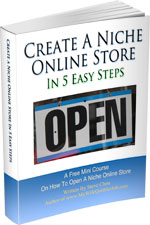
Ready To Get Serious About Starting An Online Business?
If you are really considering starting your own online business, then you have to check out my free mini course on How To Create A Niche Online Store In 5 Easy Steps.
In this 6 day mini course, I reveal the steps that my wife and I took to earn 100 thousand dollars in the span of just a year. Best of all, it's absolutely free!


